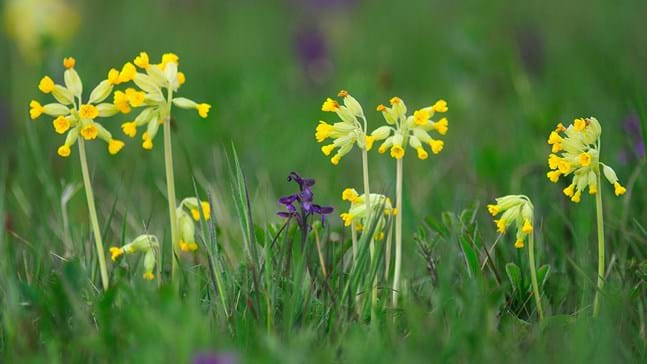
Credit: Colin Varndell / naturepl.com
Where to find cowslip
Cowslips are present across the UK. Look for them in meadows, grassland, woodland and verges as well as in gardens. They thrive on dry, calcareous (chalky) soils and flower between April and May.






